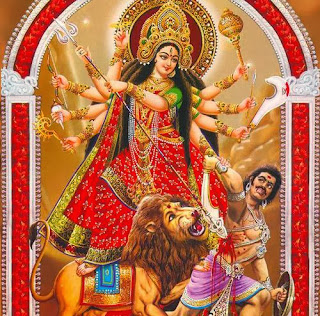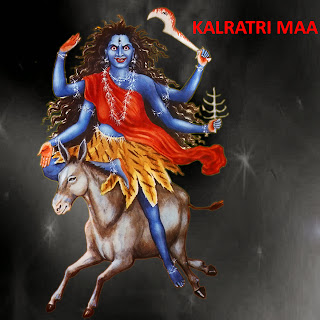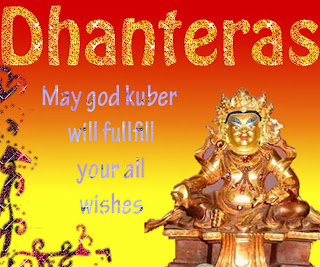Navtatri Colors Of Durga Pooja
सर्व मंगल मांगल्ये शिवे सर्वार्थ साधिके ।शरन्ये त्रयम्बिके गौरी नारायणी नमोस्तुते ।।
 |
| Maa Durga |
Sarva mangala mangalye shive sarvaartha saadhike
Sharanye trayambake Gauri Narayani namosthute.
This is one of the most powerful Durga mantras to chant during Navratri. The mantra means“To auspiciousness of all auspiciousness, to the Good, to the accomplisher of all objectives, to the source of refuge, to the mother of the three worlds, to the Goddess who is rays of light, exposer of consciousness, we bow to you”.
Navratri (nava meaning nine and ratri meaning nights) a festival dedicated to the worship of the Hindu deity “Maa Durga”. Navaratri is the most auspicious celebration concerning Devi Maa. During these nine nights of Navaratri happens to be the most auspicious and unique period of devotional sadhanas and worship of Shakti. In Shaktam, one of the practices of attaining moksham and mukti is through Goddess puja during Navaratri. The nine-days of Navratri festival are dedicated to the nine avatars of Shakti. Thus the festival of Navratri is a tribute to the avatars of Maa Shakti. The tenth day after Navratri is celebrated as Dussera or Vijayadashmi.
Worship of The Divine as Mother is a special characteristic of the Indian Culture. God is mostly referred as the Father of all creation or the Omnipotent ruler of Nature in other religions. During Navaratri, we invoke the energy aspect of God in the form of the universal mother, commonly referred to as Durga, which literally means the remover of miseries of life. She is also referred to as "Devi" (goddess) or "Shakti" (energy or power).
Lord Brahma is cited in the Markandey Purana as mentioning to Rishi Markandey that all nine incarnation of Shakti as
- Shailputri
- Brahmcharni
- Chandraghanta
- Kushmanda
- Skandamata
- Katyayani
- Kalratri
- Mahagauri and
- Siddhidatri in that order.
These nine manifestations of Shakti, are worshipped as "Nava-Durga". The fifth chapter of the Rudra Sanhita of Shiva Purana also vividly describes the various Divine Emanations of Durga.
Festival of Navratri celebrated twice in a year, The first Navratri falls in the month of March-April and are known as Chaitra Navratri. The other are celebrated in the month of October-November and are called Ashwin Navratri. These two periods are taken as sacred opportunities for the worship of the Divine Mother Durga. The dates of the festival are determined according to the lunar calendar.
Navaratri Pooja Samagri
& Vidhi
Navaratri Puja Samagri (items)
Certain
items are required to perform the Navratri pooja. These may include
- The idol or picture of Goddess Durga
- Durga Sapthashati book
- Water in Kalash (pitcher)
- Fresh washed mango leaves
- One coconut
- Roil (red color for tilak)
- Moli (red sacred thread)
- Chawal (rice)
- Paan (betel leaves)
- Supari (beetle nuts)
- Cloves
- Cardamom
- Kumkum (vermilion)
- Gulal.
- You will also need few incense sticks, a dhoop and matchstick.
- The flowers used for Navratri puja may include rose, lotus and red hibiscus.
- You may offer fresh pomegranate and sweets such as laddoo and peda, as prasad.
- You will require a Panchpatra containing spoon and water, bael leaves.
- Take a mat as well, to sit.
POOJA VIDHI
- In order to perform the puja, take bath in the morning and wear laundered clothes.
- Then, fill the kalash with water and place mango leaves on its mouth.
- Place a coconut inside the kalash.
- Now, tie moli on the neck of the pitcher.
- Place the idol or picture of Ma Durga at your puja room and then worship the deity with roli, rice, flowers, balepatra, kumkum and gulal.
- Thereafter, you may add burning coal to a clay pot and pour ghee (clarified butter) over it.
- Offer a small piece of the sweetmeat to the fire.
- Keep adding ghee to the fire at regular intervals.
- Make sure that you maintain the light throughout your puja.
- Once the puja is over, fold your hands and encircle the flame for three times.
- Light the incense sticks and dhoop and perform the aarti.
You may sing arti song while doing the aarti.You may chant Durga Saptashati or Devi Kavach or ask a pundit to do it, to conclude the puja.
Ya devi sarva bhutesu, shanti rupena sansitha
Ya devi sarva bhutesu, shakti rupena sansthita
Ya devi sarva bhutesu, matra rupena sansthita
Namastasyai, namastasyai, namastasyai, namo namaha!
This
is one among the sacred Durga mantras to chant during Navratri. This mantra
means that:
The goddess who is omnipresent as the personification of universal mother, the goddess who
is omnipresent as the embodiment of power, the goddess who is omnipresent as the symbol of peace, I bow to her, I bow to her, I bow to her again & again.
The goddess who is omnipresent as the personification of universal mother, the goddess who
is omnipresent as the embodiment of power, the goddess who is omnipresent as the symbol of peace, I bow to her, I bow to her, I bow to her again & again.


Comments
Post a Comment